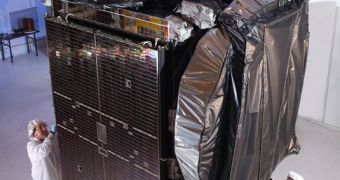A few days ago, a communications satellite that was drifting in orbit since earlier this year, reset itself and started accepting commands from its control center.
The Galaxy 15 communications satellite launched on October 13, 2005, on a European Ariane rocket, and lost contact with its flight control center on April 5, this year (2010).
What is interesting enough is that despite its malfunctioning, the satellite's telecommunications broadcast package remained operational, SPACE.com reported.
So, the spacecraft's manufacturer, Orbital Sciences Corp. of Virginia, suddenly had an uncontrollable 1,892 kg (4,171-pound) satellite drifting through the cosmos, continuing to emit signals that could risk interfering with those of neighboring satellites.
Intelsat, the communications provider that owns the solar-powered satellite, made several early attempts to shut it down, but were unable to control it, so they started working with the operators of other broadcast satellites, to make sure that their communications services would not be affected.
The satellite's manufacturer said that the cause of this incident could have been some intense solar storms, and even if Intelsat is conducting a technical investigation, they should know more once the recover it.
Also, even if there were some close flybys between Galaxy 15 and neighboring satellites, Intelsat officials said that there was never a risk of a collision.
A week ago, on December 23, the solar-powered battery on the spacecraft became completely drained, and once that happened, the satellite reset itself as it was supposed to, and began accepting commands from its control center.
Intelsat officials said that “the most critical phases of Galaxy 15's recovery have been successfully completed.
“We have placed Galaxy 15 in safe mode, and at this time, we are pleased to report it no longer poses any threat of satellite interference to either neighboring satellites or customer services.”
Since now the satellite is accepting command from Earth, it could become fully functional again, but there are other things to do before anyone can be sure of this.
“After we complete the initial diagnostic tests on Galaxy 15 and the drift of the satellite stopped, we expect to relocate the satellite to an Intelsat orbital location where we will assess the viability of the payload, and conduct extensive in-orbit testing to determine the functionality of every aspect of the spacecraft,” said Intelsat officials.
If and when the spacecraft is recovered, its service life will be evaluated, but it may not keep operating through 2020 as it was originally designed to.

 14 DAY TRIAL //
14 DAY TRIAL //